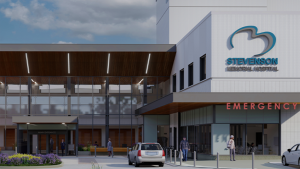Canadian infrastructure executives have undertaken serious rethinking of major projects in the months since COVID-19 hit the national economy but as they told an international conference recently, many projects in the pipeline before the pandemic still look good now.
In fact, Infrastructure Ontario (IO) president and CEO Ehren Cory told participants viewing McKinsey’s Global Infrastructure Initiatives virtual summit on June 10, after IO and the Ontario government started from “ground zero” rethinking how they would manage their portfolio of projects and communicate it, IO has decided to publish a revised list of projects as early as this week or next.
“The strategy we have landed on, we are going to put a pipeline out probably later this month, where we give some updates based on what we know now about dates,” Cory said.

“Some projects are getting accelerated because they are critical assets in the health care space for instance or in transit and transportation where we think they are going to be critical to recovery and we are going to start them earlier, some others we are saying we are going to be pushing those out.”
He called the process of reevaluating the project pipeline a “re-baselining exercise.”
Cory joined Canada Infrastructure Bank chairman Michael Sabia and other Canadian CEOs to present a Canadian spin on the theme Resetting Amid COVID-19.
Cory noted that IO had to skip the market update of projects due in April because of the pandemic but the pipeline remains a valuable tool not only to send signals to the market but also to force the government to settle on priorities.
“We use that as a forcing method for government to prioritize its upcoming projects and we use it as a signal to the market to form teams to think about their bidding strategy, to get ready and to have a dialogue about the projects, how are they going to be delivered, the contract model etc.” he said.

The IO CEO also weighed in on the issue of shovel-ready versus shovel-worthy projects. IO is not going to get caught up in pushing unworthy, unsustainable projects out the door in the name of stimulus, Cory said.
“The lessons we have learned from previous infrastructure stimulus say that it’s really important as a stimulant to the economy to get going on infrastructure projects but in a long term you create value by doing the right projects.
“I think while it is urgent and there is the goal of creating stimulus it is going to be about making sure we are doing the right projects.”
Sabia spoke as part of a panel assembled to discuss infrastructure investments in the context of current economic models and portfolio planning.
First, Sabia said, investors need to be patient, since infrastructure investing is a long-term strategy. The consequences of the pandemic, and the first-ever shutting of the global economy, have not yet been fully determined.
But still, within infrastructure categories, he said, some types of projects look solid for the long haul.
“I am thinking here of logistics, anything to do with digital infrastructure, your power systems, renewables, water systems, all of that continues to be very positive,” Sabia said.
Other types of projects might have a bumpy period and require more surgical thinking, he said.
“Are people going to continue going downtown, going to offices? Those offices are going to be differently configured. But are people going to continue to do that? I think so.
“Road capacity is constrained, cars are not really an alternative, thinking of public transit. So, in other words, if you had a high-quality asset before the crisis, there is a pretty good chance you are going to have a high-quality asset post the crisis.”
Cory was asked by moderator Robert Palter, a senior partner with McKinsey, which jurisdictions around the world have infrastructure project portfolios that are likely to survive and prosper. He named Ontario, though he stressed that new funding mechanisms would have to be found and there must be a new spirit of collaboration and partnership with project partners in future, something IO has already shown in accelerating the Mackenzie Vaughan hospital project, he said.
“We benefitted, we had a really robust pipeline, we have $65 billion either in construction or planned pre-COVID, and since then, as I said, there obviously has got to be a rethink of the timing of those…but in the main we have remained committed to that,” said Cory. “It is about having a baseline to work from and then trying to stay as true to that as we can.”
Follow the author on Twitter @DonWall_DCN.











Recent Comments
comments for this post are closed